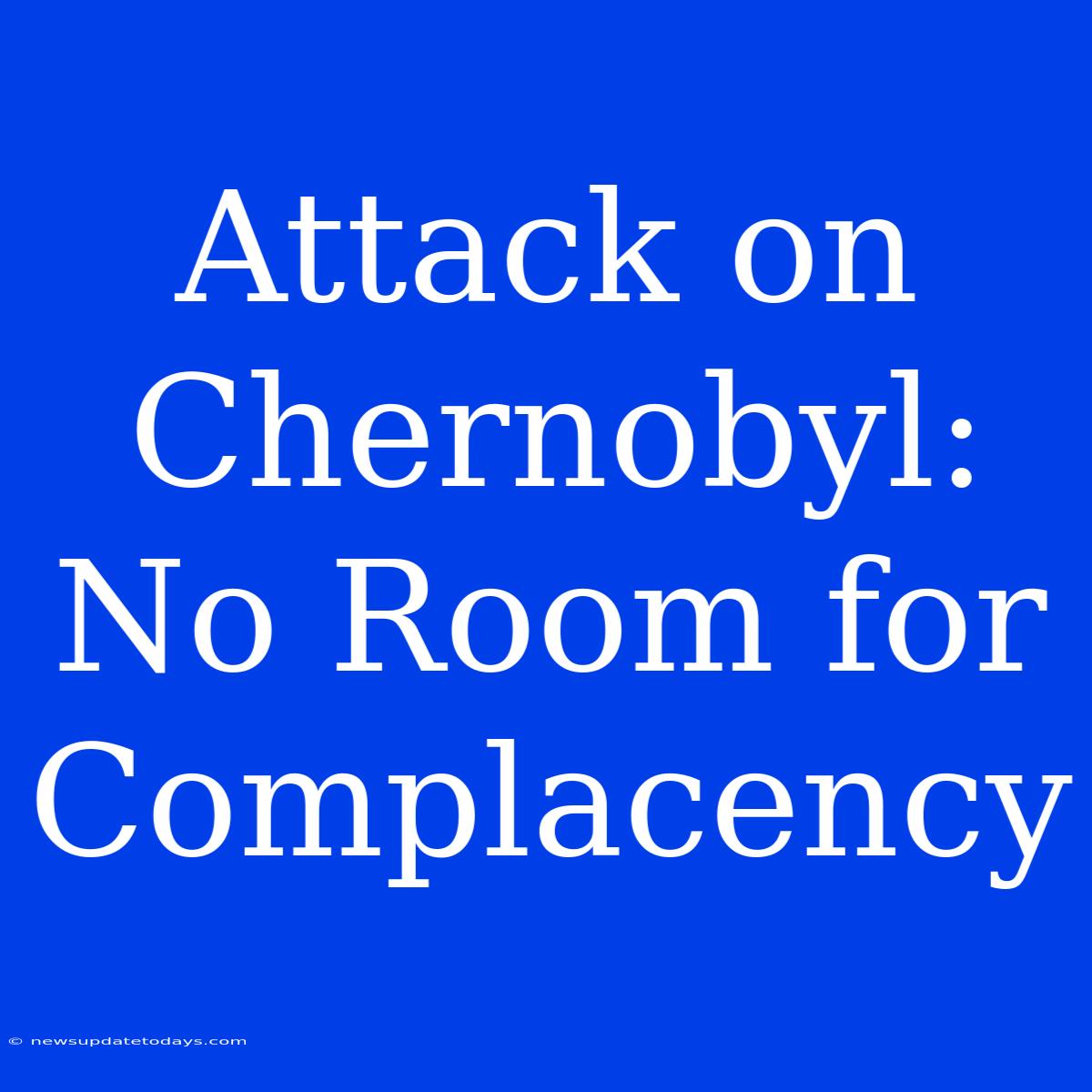Attack on Chernobyl: No Room for Complacency
The attack on the Chernobyl Nuclear Power Plant during the 2022 Russian invasion of Ukraine served as a stark reminder of the vulnerability of nuclear facilities to conflict and the potential for catastrophic consequences. While the immediate threat of a meltdown was averted, the incident highlighted critical shortcomings in nuclear safety protocols during wartime and the need for increased international cooperation to prevent future catastrophes. This event demands a global reassessment of nuclear security, emphasizing the urgent need for robust preventative measures and improved emergency response capabilities.
The Perilous Reality: A Nuclear Power Plant in a War Zone
The Chernobyl site, already the location of the world's worst nuclear disaster, became a battleground, jeopardizing the integrity of the spent nuclear fuel storage facility and raising serious concerns about the potential for a radiological release. The occupation and fighting near the plant exposed the facility to damage that could have triggered a far greater disaster than the initial attack. This situation underscores the inherent dangers of locating nuclear power plants in conflict zones or regions with political instability.
Beyond the Immediate Threat: Long-Term Risks Remain
Even though the immediate danger was successfully mitigated, the long-term consequences of the attack remain a significant concern. The damage to infrastructure, including power supplies and monitoring equipment, could compromise the safe storage of radioactive materials. The potential for environmental contamination and the long-term health effects on the surrounding population necessitate continued monitoring and remediation efforts. International organizations and the Ukrainian government need to collaborate extensively on this ongoing challenge.
Strengthening Nuclear Security: A Global Imperative
The attack on Chernobyl was a wake-up call. The world cannot afford complacency when it comes to nuclear safety, especially during times of conflict. We need a stronger international framework for protecting nuclear facilities from attack, including:
- Enhanced physical security measures: This includes improved fortifications, stricter access controls, and better protection against sabotage and armed attack.
- Improved international cooperation: Sharing of best practices, intelligence, and emergency response protocols is essential to build resilience against attacks on nuclear facilities.
- Strengthening regulatory frameworks: Existing regulations need to be reviewed and strengthened to ensure they adequately address the unique challenges of protecting nuclear facilities in conflict zones.
- Increased investment in emergency preparedness: Countries need to invest in resources and training to ensure effective response to nuclear incidents, including the evacuation and decontamination of populations.
The Path Forward: Collaboration and Vigilance
The attack on Chernobyl serves as a grim reminder that the threat of nuclear catastrophe remains very real. The international community must act decisively to prevent future incidents. This requires a sustained commitment to improving nuclear safety, bolstering international cooperation, and fostering a global culture of vigilance. Ignoring this imperative would be a grave mistake with potentially devastating consequences. We must learn from the past and work together to ensure that such an event never happens again.
Keywords: Chernobyl, nuclear power plant, nuclear security, Ukraine, Russia, invasion, radiological release, nuclear safety, international cooperation, emergency response, conflict, nuclear disaster, spent nuclear fuel, environmental contamination, nuclear attack, global security.

